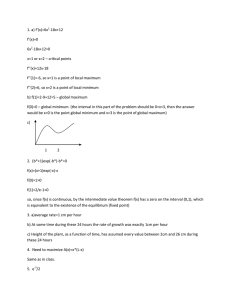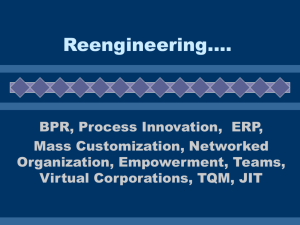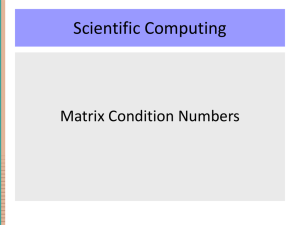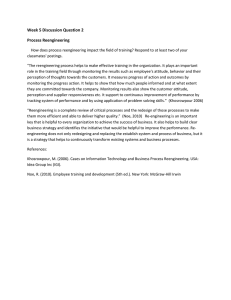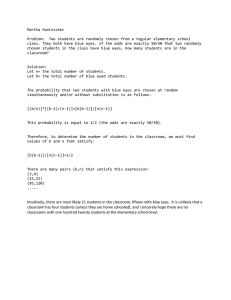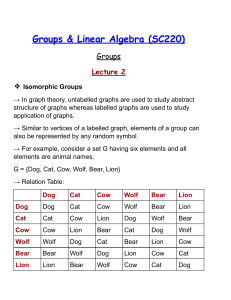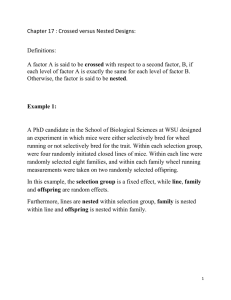15.568 – Practical Information Technology Management – Spring 2005
advertisement
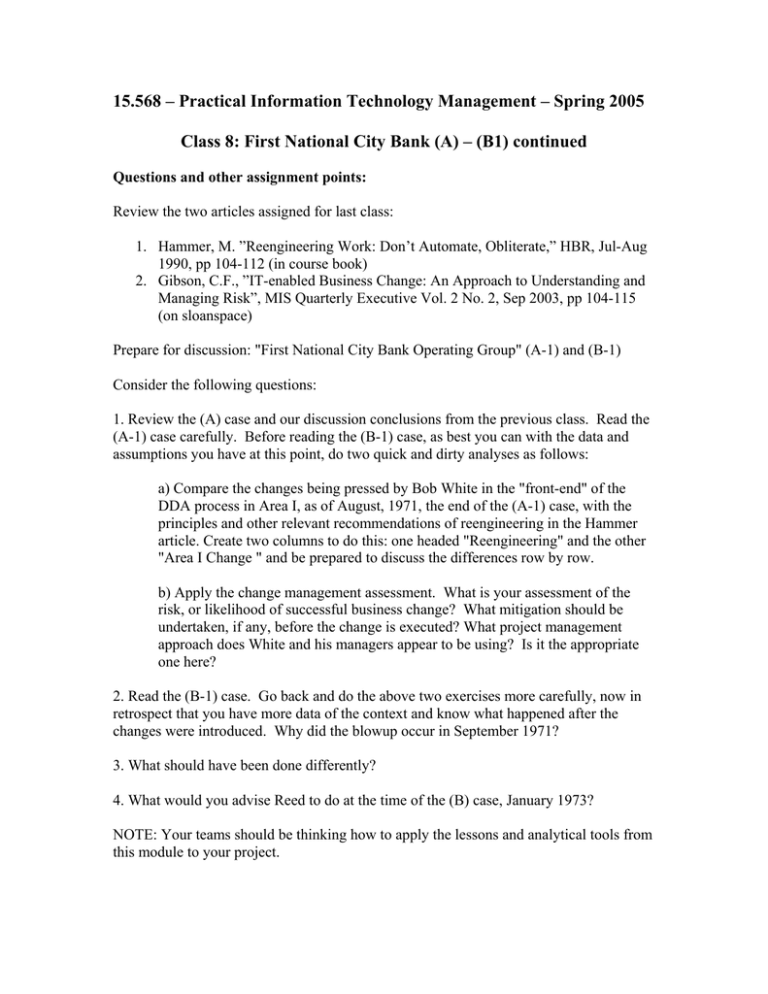
15.568 – Practical Information Technology Management – Spring 2005 Class 8: First National City Bank (A) – (B1) continued Questions and other assignment points: Review the two articles assigned for last class: 1. Hammer, M. ”Reengineering Work: Don’t Automate, Obliterate,” HBR, Jul-Aug 1990, pp 104-112 (in course book) 2. Gibson, C.F., ”IT-enabled Business Change: An Approach to Understanding and Managing Risk”, MIS Quarterly Executive Vol. 2 No. 2, Sep 2003, pp 104-115 (on sloanspace) Prepare for discussion: "First National City Bank Operating Group" (A-1) and (B-1) Consider the following questions: 1. Review the (A) case and our discussion conclusions from the previous class. Read the (A-1) case carefully. Before reading the (B-1) case, as best you can with the data and assumptions you have at this point, do two quick and dirty analyses as follows: a) Compare the changes being pressed by Bob White in the "front-end" of the DDA process in Area I, as of August, 1971, the end of the (A-1) case, with the principles and other relevant recommendations of reengineering in the Hammer article. Create two columns to do this: one headed "Reengineering" and the other "Area I Change " and be prepared to discuss the differences row by row. b) Apply the change management assessment. What is your assessment of the risk, or likelihood of successful business change? What mitigation should be undertaken, if any, before the change is executed? What project management approach does White and his managers appear to be using? Is it the appropriate one here? 2. Read the (B-1) case. Go back and do the above two exercises more carefully, now in retrospect that you have more data of the context and know what happened after the changes were introduced. Why did the blowup occur in September 1971? 3. What should have been done differently? 4. What would you advise Reed to do at the time of the (B) case, January 1973? NOTE: Your teams should be thinking how to apply the lessons and analytical tools from this module to your project.
